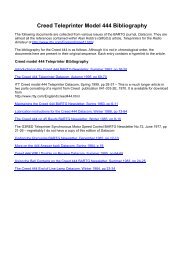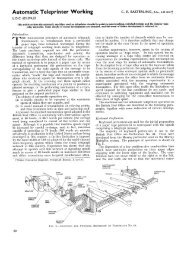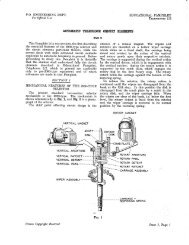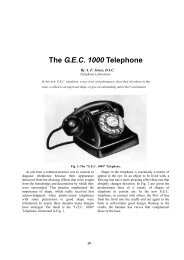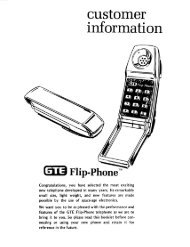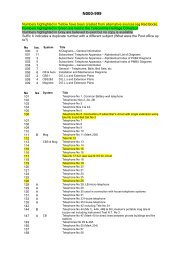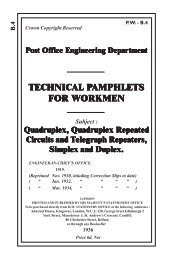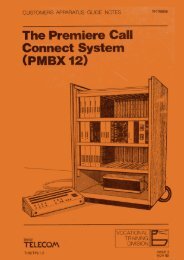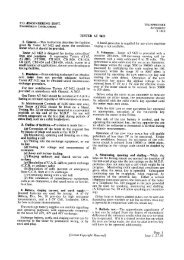TRAFFIC CONTROL TELEPHONE SYSTEMS Circuit - Sam Hallas
TRAFFIC CONTROL TELEPHONE SYSTEMS Circuit - Sam Hallas
TRAFFIC CONTROL TELEPHONE SYSTEMS Circuit - Sam Hallas
You also want an ePaper? Increase the reach of your titles
YUMPU automatically turns print PDFs into web optimized ePapers that Google loves.
Contact Sequence<br />
The standard contact sequence is as follows :<br />
Group 1.— All Break Contacts, including break portion of change-over contacts.<br />
These contacts may function in any order amongst themselves, but<br />
must all operate before any contacts in group 2.<br />
Group 2. — Comprises all make contacts including the make portion of changeover<br />
contacts.<br />
Group 3. — Make-before-Break Contacts. There is no requirement governing<br />
the sequence of these contacts in relation to any contacts on the relay other<br />
than " X " contacts.<br />
Spring Lift<br />
Group 4.— "X " Contacts. When an “X” contact forms part of a relay an “X”<br />
is included in the customer's marking. “X” contact must function before<br />
the pip clearance between the “X” contact and the break or change-over<br />
contact above it, is closed up, and also before the pip clearance of the break<br />
or change-over contact in the opposite pile-up is closed. It is also required<br />
that they function before any other contacts.<br />
When contacts are closed, buffer springs should be lifted from the buffer by<br />
means of the lever spring. The re-adjust limit is 4 mil minimum and the test limit is 2<br />
mil minimum. This does not apply to the break spring of a make-before-break unit<br />
which is tensioned hard against the buffer block so that no lift takes place. Pip<br />
Clearance<br />
The pip clearance required on “X” action is limited to 4 mil minimum (readjust)<br />
and 2 mil minimum (test). The position of the pip clearance in a typical relay<br />
with an “X” make contact is shown in the figure.<br />
Tensioning of Springs in Special Cases<br />
There are three cases where springs are not tensioned to the requirements<br />
quoted in the Table giving “spring pressure.” i.e.: Break or change-over springs above<br />
"X" contacts. Lever springs of “Y” contacts and top spring of make before break<br />
units.<br />
GENERAL REQUIREMENTS<br />
(1) Springs. — Springs must be adjusted to appear straight, when examined<br />
with the armature at approximately half stroke. To obtain spring lift, contact sequence<br />
and contact clearance requirements, the portion of the spring between the<br />
contacts and the lugs or lifting pins may be slightly set. When setting springs in this<br />
manner care must be taken to share the total set between the springs concerned in<br />
order that the set on any individual spring is as small as possible.<br />
Page 69



